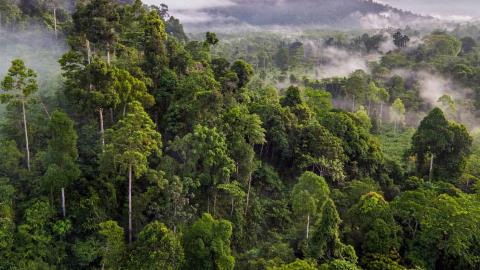In a recent dialogue with the leading experts from Tehanu AI, Tosca Tindall and Patrick McSharry, insights were shared about the company’s innovative approach to promoting environmental stewardship through the creation of green jobs. Tehanu AI focuses on integrating nature and finance, aiming to incentivize the protection of biodiversity while fostering economic opportunities.
The company is currently piloting a project in Rwanda that involves monitoring and tracking mountain gorillas. This initiative establishes a green jobs index designed to reward environmentally friendly behaviors through blockchain technology. By utilizing digital wallets, the project aims to create sustainable income streams for conservation efforts. While still in its early stages, the overarching goal is to build nature’s value as an economic infrastructure and attract capital towards biodiversity initiatives.
Tindall, serving as the finance lead and co-founder of Tehanu, brings her expertise in natural capital finance to the initiative, while McSharry, a professor of AI at Carnegie Mellon University, spearheads the technology aspects. Tindall elaborates on their mission to bolster nature stewardship, particularly in biodiverse yet underserved regions. She emphasizes the potential of AI to process vast datasets to identify various species, enabling micro-payments to local communities through mobile platforms, all verified via blockchain for transparency.
Tehanu’s financial platform is designed to connect underbanked communities with species conservation, creating income opportunities through direct engagement with the local ecosystem.
### Understanding the Green Jobs Index and Its Connection to Mountain Gorillas
McSharry explains the operational mechanics of their pilot project, detailing the use of machine learning in their ‘Know Your Gorilla’ initiative, which could expand to other species in the future. Unique features, such as the gorillas’ identifiable nose prints, allow tracking through high-resolution cameras in their natural habitat. Each gorilla’s profile—encompassing its name, lineage, and identifiable traits—is linked to a digital wallet, from which funds can be allocated for conservation actions.
The application’s AI capabilities compile extensive data on Rwandan mountain gorillas, allowing for targeted actions that enhance their well-being. Once these measures are implemented, micropayments are disbursed from the digital wallet to community agents through the platform Pawaplay.
“The conservation-based income model ensures that field agents are directly rewarded in real-time for their conservation efforts,” McSharry notes, highlighting the efficiency and accountability provided by the blockchain framework, which overcomes the challenges typical in impact investing verification.
East Africa has experienced significant digital advancements, with many residents lacking traditional banking access but utilizing mobile money platforms, paving the way for innovative financial solutions.
McSharry also points out the pressing need for jobs among youth in developing nations, particularly in African countries, where a lack of employment opportunities can escalate into migration and social unrest. He envisions Tehanu as a platform that generates green jobs, utilizing technology and data collection to provide meaningful work opportunities for young people.
### The Concept of Interspecies Money
Tindall introduces the notion of ‘Interspecies Money’—a conceptual framework for establishing financial relationships between humans and other species, emphasizing Tehanu’s role in facilitating these interactions. Their interest in Rwandan mountain gorillas stems from strong connections in the region and the abundance of research data available on the species.
Tindall notes the ongoing process of determining whether their platform will operate at the species, landscape, or individual levels, while McSharry reveals plans for additional pilot projects that may include various other primates, marine life, and even flora.
### Tackling Biodiversity and Nature Conservation
The central query guiding their efforts is: “How can we create financial streams for nature without commoditizing it?” Tindall stresses the importance of recognizing the pivotal role nature plays in our economic systems and asserts that Tehanu is grounded in the belief that embracing natural ecosystems is the future of the economy.
McSharry emphasizes the positive potential of AI technology in driving job creation and fostering sustainable practices: “Our goal demonstrates that AI can be leveraged for good, generating employment opportunities that did not previously exist. This alone can attract funding into this essential sector, allowing us to mobilize talent and equip individuals with new skills.”
Interest from Central Banks across Africa signals a promising trend, particularly regarding the financial inclusivity aspect of the project. Tindall underscores that promoting nature stewardship will facilitate the pathway toward green jobs and effective biodiversity conservation.
